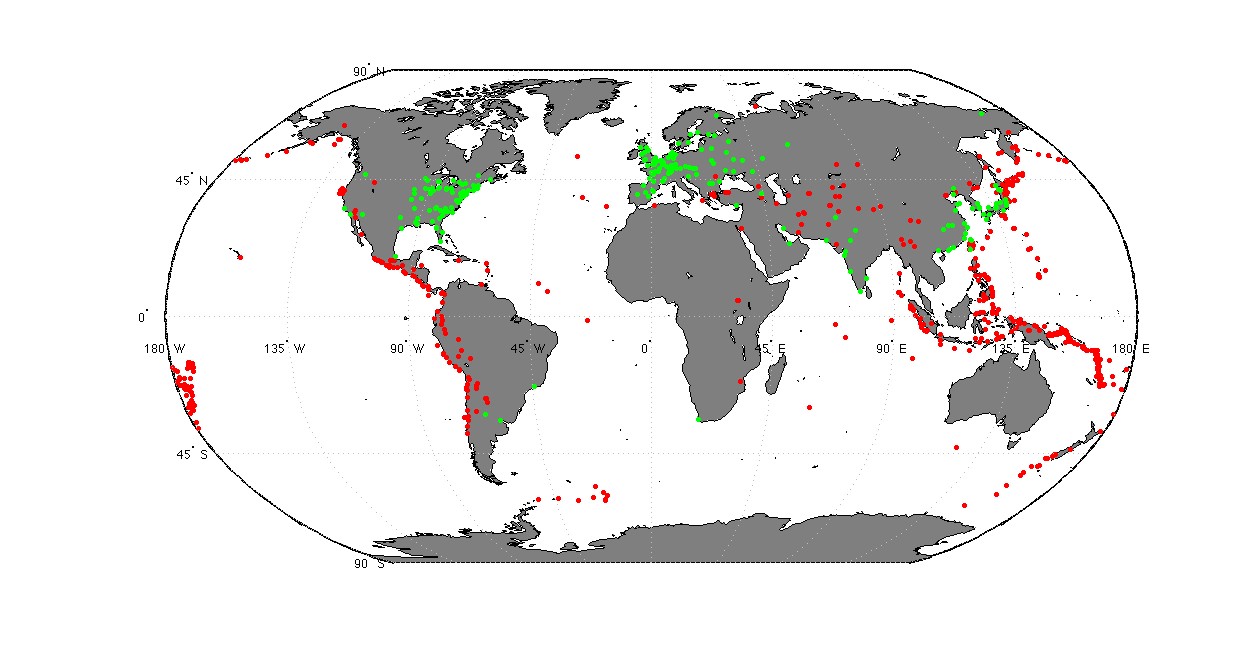In the wake of the Fukushima crisis, there has been much discussion of how to site future nuclear plants in locations that are relatively less vulnerable to earthquakes. Although we offer no opinions or recommendations on this issue, we will provide the following map.
The green dots represent all commercial nuclear plants in the world that are currently operating, under construction, or officially on order. There are 222. The only plant omitted is Russia’s portable floating power station Akademik Lomonosov (due for deployment in Kamchatka), for which the siting issue is not particularly pertinent.
The red dots represent all earthquakes of magnitude at least 7.0 that occurred from 1973 through 2010. There were 520 such earthquakes. These data points were provided by USGS, which has collected standardized worldwide earthquake data since 1973.
As you can see, an overwhelming majority of the world’s nuclear plants are located quite far from regions in which large earthquakes typically occur. The main exception is eastern Asia and especially northern Japan.
In fact, the mean distance* from a nuclear plant to the nearest earthquake shown is 785 miles. The mean distance from a large set of random points on the (land only) surface of the earth to the nearest such earthquake is 741 miles. The median distance from a nuclear plant to the nearest such earthquake is 809 miles. The median distance from the same large set of random points to the nearest such earthquake is 682 miles.
*Here we used the “great circle” distance, which is the shortest distance between two points on the surface of a sphere.

